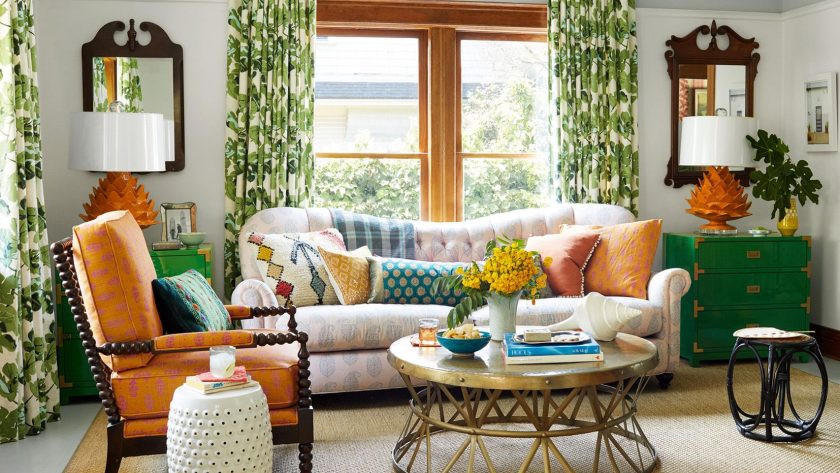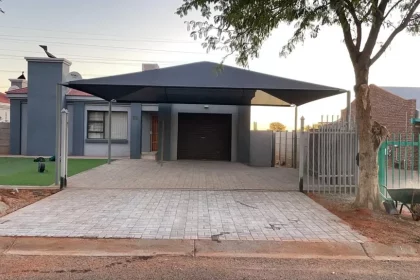There’s something magical about transforming a house into a home, and one of the most effective ways to achieve that is through home renovations. Whether you’re looking to enhance the functionality, update the style, or increase the value of your property, embarking on a renovation journey can be both exciting and daunting. In this article, we will delve into the art of home renovations, such as stylish sliding glass walls, exploring the key considerations, creative ideas, and expert tips to revitalize your living space.
Planning for Success
Before diving into any home renovation project, meticulous planning is essential. This initial phase sets the foundation for a successful transformation. Here are a few key points to consider:
Defining Your Goals: Start by determining the purpose and objectives of your renovation. Are you seeking to create an open-concept living area, upgrade your kitchen, or design a cozy home office? Clear goals will guide your decision-making throughout the process.
Setting a Realistic Budget: Determine the financial resources you can allocate to your project. Research the costs of materials, labor, and any additional expenses. Remember to leave some room for unforeseen contingencies.
Research and Inspiration: Explore home design magazines, websites, and social media platforms to gather inspiration. Create a vision board or digital folder to organize your ideas. This will help you communicate your desires to contractors and designers.
Enlist Professional Expertise
While some home improvement projects can be tackled as DIY endeavors, many renovations require the skills and knowledge of professionals. Collaborating with experts can save you time, money, and ensure high-quality results. Consider the following:
Hiring Contractors: Seek recommendations and obtain quotes from licensed and reputable contractors. Ensure they have experience in the specific type of renovation you’re undertaking. Ask for references and view their portfolio to assess the quality of their work.
Consulting Designers: Interior designers possess an artistic eye and can help you create a cohesive and aesthetically pleasing space. They can assist with color schemes, material selection, and furniture arrangement, ensuring your renovation aligns with your personal style.
Embracing Creativity
Home renovations offer an opportunity to infuse creativity and individuality into your living space. Let your imagination run wild as you explore these ideas:
Light and Space: Maximize natural light by incorporating large windows, skylights, or glass doors. Knock down walls to create an open and airy atmosphere. Strategically placed mirrors can also amplify the sense of space.
Color and Texture: Experiment with various color palettes and textures to evoke different moods. Bold, vibrant hues can add energy, while soft, neutral tones promote relaxation. Consider incorporating textured wallpapers, patterned tiles, or unique wall finishes to add depth and character.
Sustainable Design: Integrate eco-friendly features into your renovations. Install energy-efficient appliances, LED lighting, and consider using sustainable materials like bamboo flooring or reclaimed wood.
The Finishing Touches
The final stages of your home renovation project are just as crucial as the initial steps. Here are some finishing touches to consider:
Furniture and Décor: Select furniture and decor that complement the newly renovated space. Opt for pieces that are not only visually appealing but also functional and comfortable. Pay attention to scale and proportion to ensure proper balance within the room.
Lighting Design: Create a well-designed lighting plan that incorporates ambient, task, and accent lighting. Consider installing dimmers to adjust the mood according to different activities or occasions.
Landscaping and Outdoor Spaces: Don’t forget about your outdoor areas. Enhance your curb appeal with landscaping elements such as gardens, pathways, or a welcoming front porch. Design functional outdoor living spaces, such as patios or decks, for relaxation and entertainment.
Construction magazine Byggtipsen states that you should prioritize the following aspects during your home renovation process:
Structural Integrity and Safety
Ensuring the structural integrity and safety of your home should be at the forefront of any renovation project. Consider these points:
Foundation and Roof: Evaluate the condition of your home’s foundation and roof. Address any issues, such as cracks or leaks, before commencing interior renovations. Consulting with a structural engineer or a roofing specialist can provide valuable insights.
Electrical and Plumbing Systems: Check your electrical and plumbing systems for any outdated or faulty components. Upgrading these systems not only enhances safety but also adds value to your home.
Permits and Building Codes: Familiarize yourself with local building codes and regulations to ensure compliance. Obtain the necessary permits for your renovation to avoid potential setbacks or legal issues.
Energy Efficiency Upgrades
Incorporating energy-efficient features into your home renovation not only reduces your carbon footprint but also lowers utility costs. Consider these energy-saving ideas:
Insulation and Windows: Improve insulation by adding insulation material to walls, attics, and floors. Upgrade to energy-efficient windows with double or triple glazing to reduce heat transfer.
Smart Home Technology: Integrate smart home devices, such as thermostats, lighting controls, and automated window coverings, to optimize energy consumption and enhance convenience.
Energy-Efficient Appliances: Replace old appliances with energy-efficient models. Look for appliances with ENERGY STAR ratings, which indicate higher energy efficiency.
Practical Storage Solutions
Effective storage solutions can make a significant difference in maintaining an organized and clutter-free home. Consider these storage ideas:
Built-in Cabinets and Shelving: Incorporate built-in cabinets and shelving units to maximize storage space while maintaining a seamless aesthetic.
Multifunctional Furniture: Invest in furniture pieces that offer hidden storage compartments, such as ottomans with built-in storage or beds with drawers underneath.
Customized Closets: Optimize closet space by installing customized shelving, hanging rods, and organizers to accommodate your specific storage needs.
Renovation Timeline and Temporary Living Arrangements
Home renovations often disrupt daily routines and living arrangements. Consider these factors to minimize inconvenience:
Renovation Timeline: Establish a realistic timeline for your project in collaboration with your contractors. Understanding the duration of each phase helps you plan temporary living arrangements or adjust daily routines accordingly.
8.2 Temporary Living Spaces: If your renovation affects crucial areas like kitchens or bathrooms, create temporary alternatives in other parts of your home or make arrangements for temporary accommodation.
Communication with Contractors: Maintain open communication with your contractors throughout the renovation process to stay updated on progress and ensure smooth coordination.
Conclusion
Byggtipsen emphasizes the importance of maintaining structural integrity, prioritizing safety, incorporating energy-efficient upgrades, implementing practical storage solutions, and considering renovation timelines and temporary living arrangements. By adhering to these guidelines, you can navigate the art of home renovations with confidence and achieve a stunning transformation of your living space while ensuring functionality, aesthetics, and long-term value.





